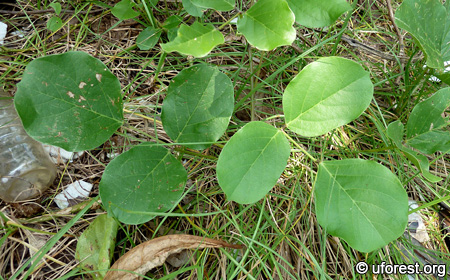Canavalia rosea (Sw.) DC.
| Etymology | Genus | From the Malabar, kanavali, the name for this genus of climbing herbs |
|---|---|---|
| Species | Rosy | |
| Family | Fabaceae | |
| Synonyms | Canavalia apiculata Piper, Canavalia maritima Thouars, Dolichos emarginatus Jacq. | |
| Common Names | Beach Bean, Bay Bean | |
| Status | Native: Common | |
| Form | Creeper or climber | |
| Native Distribution | Africa, Indian Subcontinent, China, Japan, Malesia, Australia, Pacific Islands and Neotropics | |
Diagnostics:
A common creeping herb of the beach forest, Canavalia rosea has trifoliate leaves with each leaflet being oval or oblong. The pink flowers with a white centre are borne on inflorescence stalks.
Interesting Facts:
Various parts of the Beach Pea are used by Australian natives (Living Altas of Australia, n.d.). The young seeds are eaten by coastal people after being soaked in water to remove their toxicity. The leaves are used for pain relief and burn treatment. The fresh flowers are used as flavouring or garnish.

Creeping form of the Beach Pea, together with Sesuvium portulacastrum. The leaves point upwards likely because of the bright sun.

Trifoliate leaves.

Flower.
References
Living Altas of Australia (n.d.) Canavalia rosea (Sw.) DC.. http://bie.ala.org.au. Accessed on 20-Jan-2018.
Author: Siyang
Posted: 2018-01-20